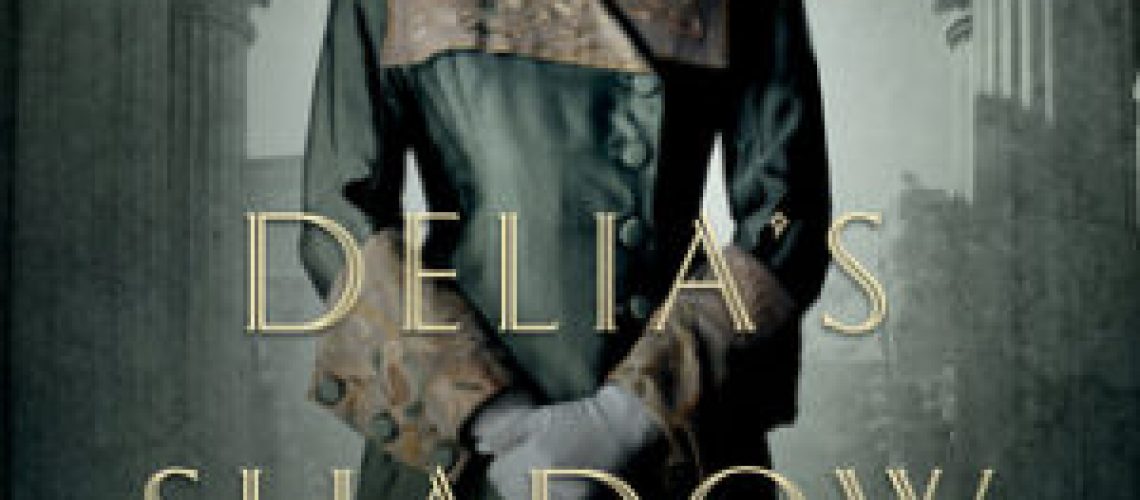Delia Martin’s early 20th-century American life as a woman of money and means is not all peaches and cream. Delia has an unwanted and rather terrifying ability to see ghosts. After the Great Earthquake of 1906, Delia left her San Francisco home, and she thought, the ghosts forever. One determined spirit that crossed the country to find Delia brings her back to her hometown. Delia, with the ghost, which she has named Shadow, arrive just in time for her best friend’s wedding and the Pan-Pacific Exposition besides. And the possibility of a new romance for Delia. Oh, and also just in time to wind up in the middle of the bloody run of a serial killer. A serial killer who has killed before. And a serial killer to which Delia’s shadow might have a connection.
The eponymous Delia’s Shadow is the debut novel of Jaime Lee Moyer.

Ghost stories are not my usual fare in fiction, and the early 20th-century period running up to the first World War I is not a historical period that I have a tremendous amount of interest in. Thus, Delia’s Shadow is somewhat out of my usual reading comfort zone, and a deliberate attempt on my part to broaden my horizons.
Delia’s novel is also very firmly a romance, and lives in the overlapping subgenres of paranormal romance and fantasy fiction. In recent years, especially with changing demographics of genre readers, these two subgenres of fiction have had an increasing amount of overlap and cross chatter. Authors like Linnea Sinclair and Richelle Mead have written novels that sit in the penumbra of both subgenres, partaking of elements of both, mixing and matching elements.
Jaime Lee Moyer’s Delia’s Shadow can be counted amongst them. The novel itself, although it does have someone who can see Ghosts as one of its two POV characters and its primary one, is very much a novel of character and romance. The author does very well with a first-person point of view, giving us a full and rich look at Delia’s inner life. The author invokes her story and her dreams and fears in excellent prose. I was thus drawn quickly into Delia’s world even if I was unfamiliar with many of the tropes and trappings of her story.
The novel is relatively light on genre elements beyond the fact that Delia can see and to a frustrating and varying extent interact with ghosts. There is a secondary character, a medium, who provides some additional genre entry in her own connections to ghosts and the supernatural, and serves as a mentor character to Delia. For all of Delia’s long experience of seeing ghosts, her relative inexperience with handling and manipulating them makes for an interesting tension in her character.
Delia’s Shadow is also, to lesser extent, a police procedural. The other major character, the other half of Delia’s romance, Gabe, is one of the two detectives investigating the string of killings left by the serial killer. His attempts to navigate the untangling of the bloody run of the killer, as well as his budding feelings for Delia, provide the other half of the backbone of the novel. In contrast to Delia’s chapters, Gabriel is presented to us in the third person, but it is a relatively intimate point of view, giving us a deep look into his character close to the first person we get from Delia, although still from the outside. The puzzle and the problem of the serial killer, their identity, background, and how they are connected to the main characters is a fair one. The author briskly moves us through the plot of the serial killer. Admittedly, the author’s passion and interest do appear to be located in other facets of the book.
The sense of place, however, is another strong feature of the book. The author invokes post-Earthquake San Francisco rather well, and having someone who had left San Francisco only to return to it to see it being rebuilt is an excellent choice on her part. This does allow the reader to be grounded in what Delia knows, and what is new to Delia. The major set pieces for this, then, especially, revolve around the visits to the 1915 Pan Pacific Exhibition. The invocation of the sights and sounds of the Exhibition are well done, and I found myself wishing as I read the novel to be able to go to San Francisco and see the remains of the buildings from that Exhibition today, and to photograph them.
While the relatively light genre touch and relative unfamiliarity with the subject were drawbacks, I warmly enjoyed the experience of reading Delia’s Shadow. Not being entirely familiar with the tropes, I suspect the novel is relatively conventional in many ways in terms of characters and plotting, but my lack of experience prevented me from disliking the book on those grounds. I look forward to Moyer’s future novels, especially if they align more closely with my usual tastes and subtypes of fantasy.







